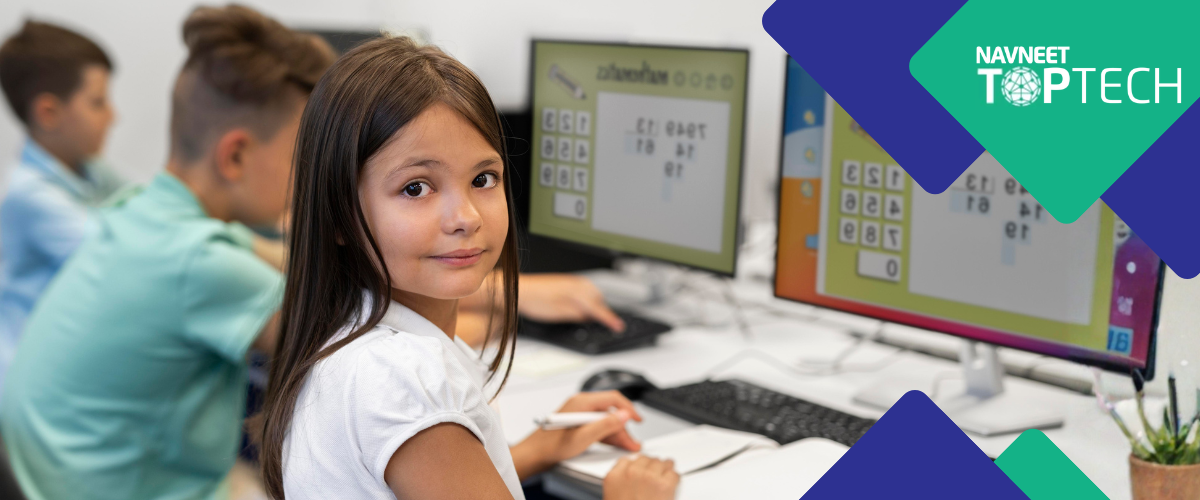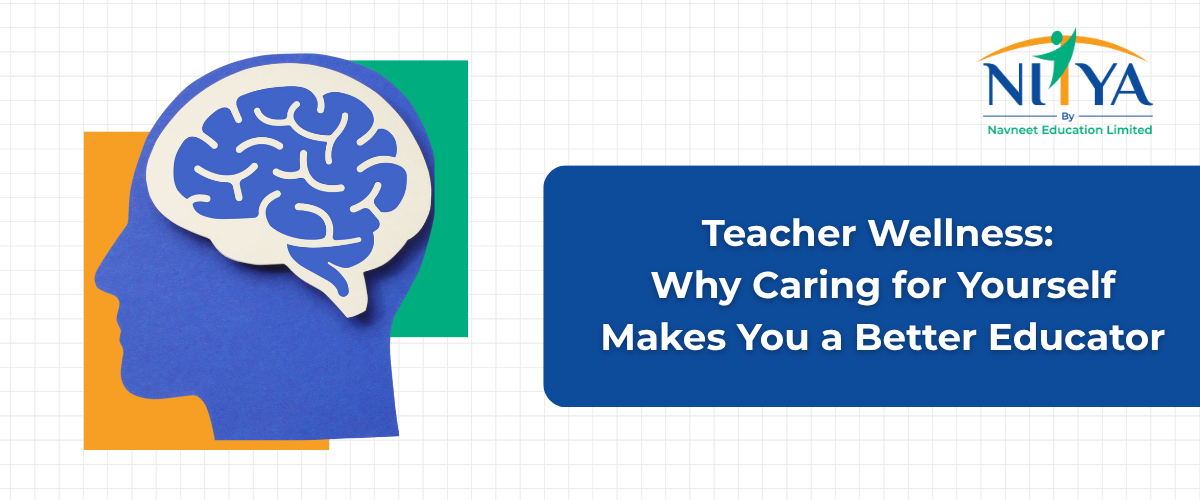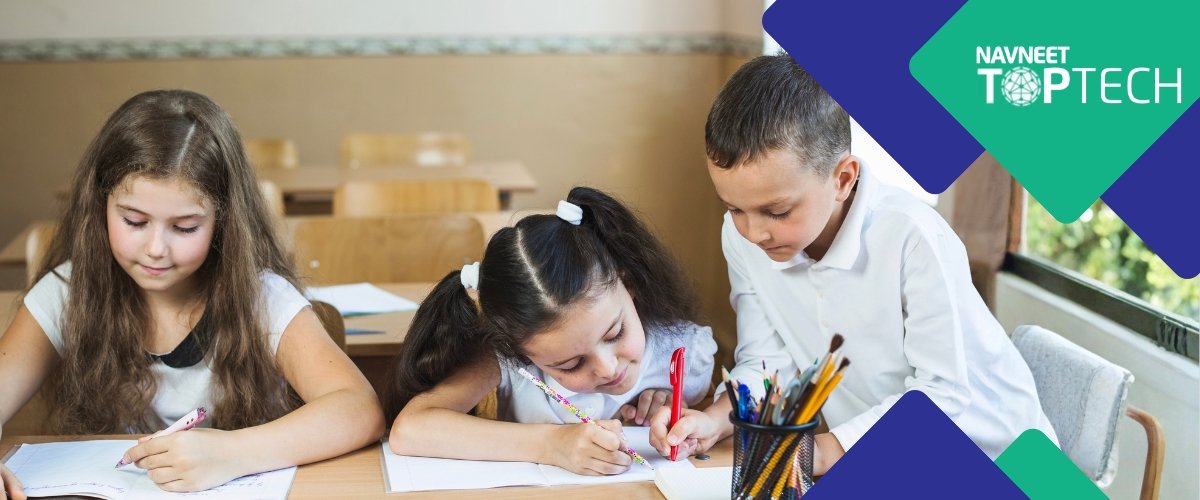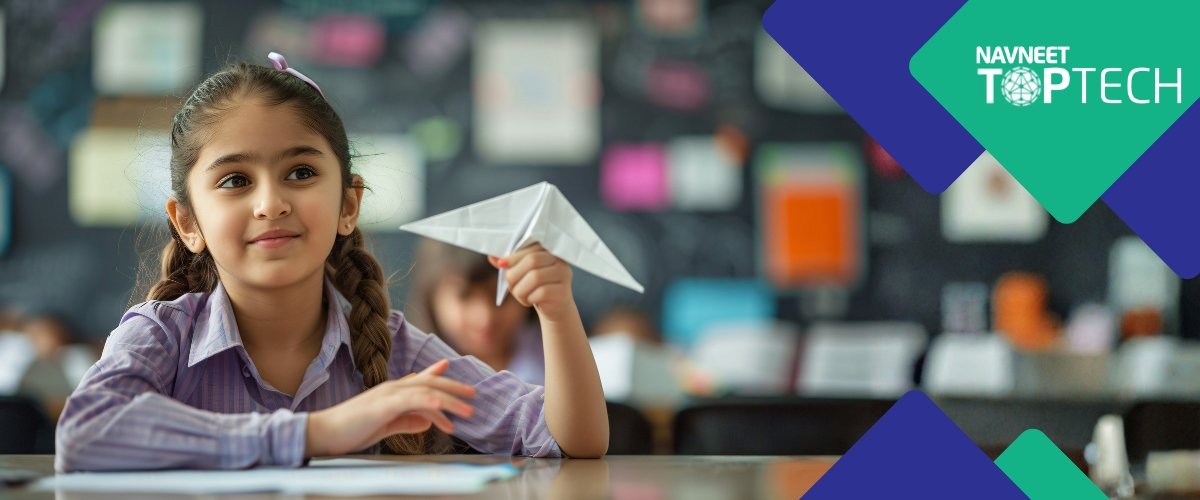Every classroom has one constant: no two students learn in exactly the same way. Some grasp new ideas quickly, while others prefer to revisit them step by step. Some thrive on visuals and interaction, while others learn best through reading and reflection. For decades, teaching had to follow a single path, leaving many learners underserved.
That’s where today’s digital classrooms in schools are making a real difference. They don’t just modernize infrastructure; they give teachers the tools to connect with every child’s pace and style of learning.
In this blog, we’ll look at what a digital classroom is and the tools that make it work, explore what personalized learning in education really means, and see how digital classrooms bring the two together. We’ll also highlight the benefits for students and teachers, the challenges schools face, and how partners like Navneet TOPTECH are helping institutions make this shift possible.
What Is a Digital Classroom?
A digital classroom is an ecosystem where technology and pedagogy work hand in hand to create learning that feels more engaging, adaptable, and inclusive.
Imagine a teacher no longer limited to chalk and talk, a lesson taught with the support of an interactive smartboard to break down a concept, a Learning Management System (LMS) that tracks each student’s progress, and a virtual library where learners can revisit content anytime. It’s not just about putting devices in a room; it’s about giving teachers and students tools that extend learning beyond the four walls. Lessons are no longer static; they become conversations, activities, and explorations.
For students, e-learning means lessons don’t stop when the bell rings. They can rewatch recorded classes when they need to revisit a concept, join virtual classes if they miss a day, attempt quizzes that give instant feedback, or collaborate with peers on digital platforms. For teachers, it’s about saving time on repetitive tasks and gaining real insights into how every student is doing to guide and mentor them better.
With integrated solutions like those from NAVNEET TOPTECH, schools are turning classrooms into vibrant digital spaces where learning adapts to the learner, not the other way around.
To see how these pieces come together, you can explore Digital Smart Classroom Solutions for Schools, powered by NAVNEET TOPTECH, which helps schools build holistic digital ecosystems.
Understanding Personalized Learning
Personalized learning in education is the approach of tailoring instruction to the needs, strengths, and pace of each student. Instead of teaching toward the “average,” it respects the individuality of learners, helping teachers create pathways that help each child succeed.
Why does this matter? Because students who learn in ways that match their abilities are more confident, more engaged, and less likely to feel left behind. A child struggling with math can practice with adaptive exercises until the concept clicks, while a student excelling in science can move ahead into advanced modules without waiting.
Personalized learning ensures that students:
- Build confidence through achievable milestones
- Stay motivated because lessons feel relevant and engaging
- Progress at a pace that reflects their abilities, without feeling left behind
The aim is not to separate learners but to empower them, to make classrooms places where every student has the chance to succeed in their own way.
How Digital Classrooms Enable Personalized Learning
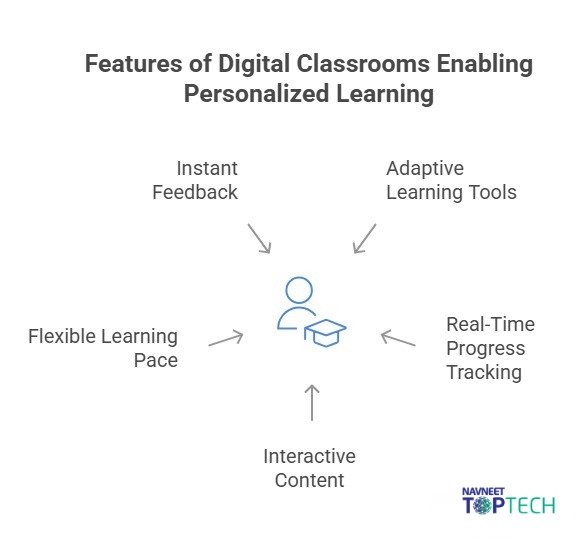
Adaptive Learning Tools
Digital platforms adjust content based on performance. They use adaptive algorithms to adjust content difficulty in real time. If a student excels, the system provides more challenging material; if they need reinforcement, it offers extra practice. This ensures that every child progresses on a path designed for them, leading into a continuous cycle of growth tailored to each learner.
Real-Time Progress Tracking
Teachers gain access to dashboards that show exactly how students are performing. Early signs of difficulty can be spotted and addressed before they become major gaps. Students, too, benefit from visual progress charts. These gamefied visuals make improvement visible and tangible, keeping them motivated.
Interactive and Engaging Content
Digital classrooms bring subjects to life through videos, AR/VR modules, and gamified exercises. When learning feels interactive, students are more curious and attentive. This engagement reduces passivity and turns lessons into active exploration.
Flexible Learning Pace and Accessibility
Recorded sessions and modular lessons give students freedom to revisit topics whenever needed. This flexibility supports learners who take longer to process information creating breathing room, while offering faster learners opportunities to move ahead and explore advanced concepts. It creates an environment where no one feels left out.
Instant Feedback and Collaboration
Digital classrooms provide quick feedback through online quizzes and assignments, helping students know exactly where they stand. At the same time, collaborative tools encourage group projects and peer learning, reinforcing that education is both individual and collective.
Together, these features highlight the true benefits of digital classrooms: they don’t just transfer knowledge; they nurture growth in a way that feels personal.
Benefits for Teachers and Students
For students:
- Classes feel more engaging and relevant, with interactive tools that hold their attention.
- They gain confidence as progress feels visible and achievable.
- They can learn without the pressure of keeping pace with everyone else.
For teachers:
- Routine tasks like grading and attendance are automated, and teaching lessons becomes more efficient and adaptable
- Data-driven insights highlight where students need extra help to support struggling learners with precision.
- Lessons become more adaptable, enabling them to focus on meaningful interaction rather than administrative tasks.
These are the lasting benefits of digital classrooms: better engagement, clearer pathways for success, and healthier learning environments. With NAVNEET TOPTECH, schools gain access to systems designed to maximize these benefits for both educators and learners.
Challenges on the Road to Digital Classrooms and How to Overcome Them
Like any innovation, shifting to digital classrooms isn’t without hurdles. Schools often face three big challenges:
- Teacher Readiness: Not every educator is comfortable with new technology, which can make adoption uneven and stressful.
- System Complexity: Integrating multiple tools, from projectors and smart boards to learning apps and management software, can feel overwhelming.
- Ongoing Support: Technology is only useful when it works seamlessly. Breakdowns, updates, or a lack of immediate help can disrupt learning and frustrate staff.
This is where the right partner matters. NAVNEET TOPTECH is not just a provider of digital tools but a long-term ally in the journey of transformation.
- Comprehensive Training Programs: NAVNEET TOPTECH ensures every teacher feels confident with the technology. Their structured digital pedagogy bridges the gap between comfort zones and new possibilities.
- Seamless Integration: Rather than leaving schools to manage a patchwork of devices and platforms, Navneet TOPTECH solutions are designed to work together as one ecosystem, simplifying classroom management and reducing stress for administrators.
- Dedicated Customer Service: Schools never have to face technical roadblocks alone. NAVNEET TOPTECH’s after-sales service and responsive customer support team are committed to quick resolutions, so classrooms stay focused on learning, not troubleshooting.
- Future-Ready Partnership: With regular updates, proactive maintenance, and a willingness to listen to feedback, NAVNEET TOPTECH positions itself as a partner invested in a school’s growth, not just a vendor of tools.
By addressing these concerns directly, we help schools not just adopt technology but truly embrace it with confidence, continuity, and care.
As Latha Ravindra Karkera, from MVM’s Swami Muktananda High School, Andheri, shared,
“I have been truly impressed by NAVNEET TOPTECH’s commitment to providing high-quality educational resources that meet the needs of our students. Their Phygital products are a true asset to any school’s curriculum.”
These real-world classroom experiences highlight how the right support system can transform digital adoption into a meaningful impact.
Conclusion
Digital classrooms in schools are no longer about keeping up with technology trends. They’re about making education personal, inclusive, and effective. By aligning with the principles of personalized learning in education, they ensure that every child, regardless of pace or style, gets the opportunity to learn with confidence.
The shift benefits teachers too, enabling them to spend less time on routine tasks and more time on what truly matters: teaching, guiding, and inspiring.
With the right approach and trusted partners, schools can unlock the full benefits of digital classrooms and build a future where learning is designed for every learner. The future of education will belong to institutions that embrace these changes today.
Discover how NAVNEET TOPTECH can help your school implement NCF 2022-aligned classrooms with smart boards, LMS platforms, and digital learning solutions. Start the transformation today with a demo of NAVNEET TOPTECH’s Smart Classroom. Click here to get started

